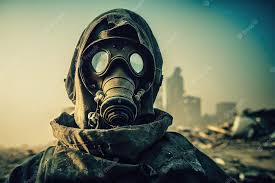The world is filled with various gases, some of which can be harmless or even essential for life. However, there are gases that possess extreme toxicity, capable of causing severe harm or even death. In this blog post, we will delve into the realm of deadly fumes, exploring the most toxic gases known to humanity, their sources, effects, and the importance of safety measures in dealing with them.
I. Understanding Toxicity:
- Toxicity Levels: Toxicity is measured by the lethal concentration (LC50) or lethal dose (LD50), which indicates the amount of gas required to cause death in a specific population or organism.
- Factors Influencing Toxicity: Various factors, such as concentration, duration of exposure, and individual susceptibility, play a role in determining the effects of toxic gases on living organisms.
II. Notorious Toxic Gases:
- Hydrogen Cyanide (HCN): Hydrogen cyanide is a highly toxic gas that interferes with cellular respiration. It can be released from certain industrial processes and combustion of materials, such as plastics and synthetic fibers.
- Sarin: Sarin is a nerve agent that disrupts the functioning of the nervous system. It has been used in chemical warfare and terrorist attacks due to its potency and ability to cause paralysis and respiratory failure.
- Chlorine (Cl2): Chlorine gas, widely used in industrial processes, can be highly toxic when inhaled. It reacts with water in the respiratory system, forming hydrochloric acid and causing severe tissue damage.
- Sulfur Dioxide (SO2): Sulfur dioxide is produced by burning sulfur-containing fuels and is a major air pollutant. It can cause respiratory issues, such as bronchoconstriction and inflammation, and is especially harmful to individuals with pre-existing respiratory conditions.
- Carbon Monoxide (CO): Carbon monoxide is a colorless, odorless gas produced by incomplete combustion of carbon-based fuels. It binds to hemoglobin, reducing the oxygen-carrying capacity of blood and leading to oxygen deprivation in vital organs.
III. Natural Sources of Toxic Gases:
- Volcanic Activity: Volcanic eruptions release various toxic gases, including sulfur dioxide, hydrogen sulfide, and carbon dioxide. These gases can pose serious health risks to nearby populations and wildlife.
- Radon: Radon is a radioactive gas released from the natural decay of uranium in soil and rocks. Prolonged exposure to high levels of radon can increase the risk of lung cancer.
IV. Safety Measures and Mitigation:
- Industrial Regulations: Strict regulations and safety protocols are in place to control the release and exposure to toxic gases in industrial settings.
- Ventilation Systems: Adequate ventilation systems are crucial in preventing the buildup of toxic gases and ensuring a safe working or living environment.
- Personal Protective Equipment: Workers in industries dealing with toxic gases are equipped with personal protective equipment, such as respirators and gas masks, to minimize exposure risks.
Conclusion: Understanding the dangers posed by toxic gases is essential for safeguarding human health and the environment. By recognizing the sources, effects, and safety measures associated with these deadly fumes, we can mitigate risks, promote safety standards, and protect ourselves and future generations.



















Add Comment